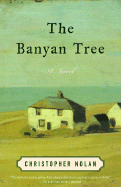
During my 1973 trip to Norway with my parents, we spend some time with a friend's family in Southern Norway. They had been very involved with the resistance movement in World War II. We drove to a remote area near the coast where you could still find remnants of barbed wire from that era. My father was fascinated by the barbed wire and brought home several souvenirs, which I'm sorry I no longer have. For a while my friend (who was a toddler during WWII) lived in that area with his grandparents when things were heating up in Oslo.
Here's a link to Akershus Castle, which houses the resistance museum in Oslo. It's a fascinating place and a good reminder that it took many countries to defeat Hitler's wrath in Europe. The Scandinavians were often silent heroes in that fight!
Clearly the story involves a network of persons committed to this cause!












Thanks for this Barbara- it is indeed good to be reminded of the resistance that went on throughout Europe. I read 'The Memory Man' a few years ago- Lisa Appignanesi- and, although fiction, it gives very vivid descriptions of Polish resistance.
ReplyDeleteI'm not familiar with that book, but I find it so fascinating that so many people were willing to risk their lives in these underground movements that existed in most European countries. Their contributions are often overlooked as we dwell on the big battles of the war.
ReplyDeleteI'm wondering if this concept of a "resistance" ended with WWII?
Trond does make references to the occupation of Norway, during WWII. This from the "Out Stealing Horses" book. And the resistance concept is still alive in the Balkan countries, Asia, India and the Middle East. Only now it's called "terrorism" and both sides use it. Kind of pointless, in my book.
ReplyDeleteReminds me of another book from childhood (more posts coming about those soon, btw) called Snow Treasure - based on a true story about a bunch of village children who sledded a portion of Norway's gold reserves down the mountain to get it safely to a hidden ship, and then to the U.S...
ReplyDeleteMegan, I remember that book.
ReplyDeleteSubtorp77 -- I'm not sure the resistance movement can be equated to modern-day terrorism. It was definitely not pointless during WWII. I'd be curious to hear what others have to say about this.
ReplyDeleteNo I don't think resistance is the same as terrorism. But now i think about it- I am not sure why- this could bring up deep questions of a moral nature- such as when is a war a just war? I tend to think of terrorism as deliberately targeting innocent, defenceless people.
ReplyDeleteI'm starting to think the categorization as resistance or terrorism may have something to do with what side one is on! However, I do think Cinnamon may be onto something more defensible as a distinction. The majority of people injured or killed in terrorist acts are innocent victims.
ReplyDeleteI suggest we keep this in the back of our minds as we read (or re-read) the book. It may make an interesting discussion.
We also should remember as we throw things out that each of us is entitled to an opinion without a label of "right" or "wrong".
I've been wondering lately if the word terrorism has lost some of its meaning, or perhaps been unconsciously stretched in the public mind to include acts of resistance that would not otherwise be defined so? There's a fearful lack of education in this country.
ReplyDeleteSpot on, Barbara - no labeling!
I didn't go to this museum (but then my Norwegian friend had a reason--her dad had been the exact opposite of a resister.) She was born after the war, but still knew what had happened. That has to be difficult.
ReplyDelete